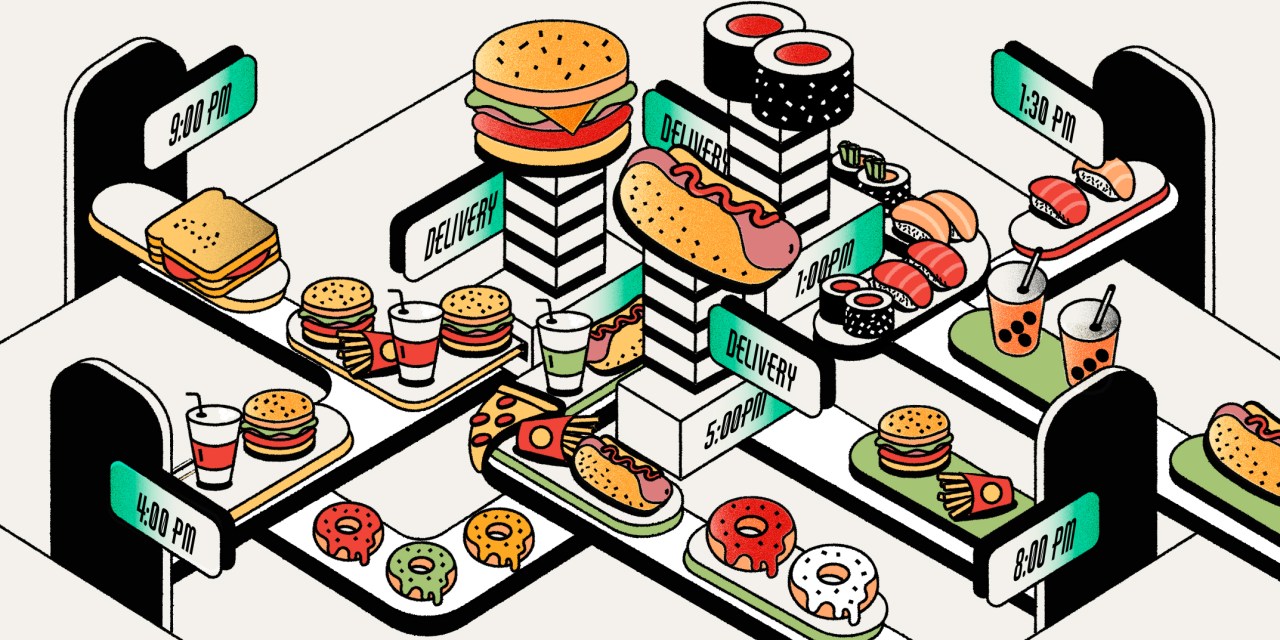Ghost kitchens are making a post-pandemic pivot to survive

Just three years after the spectacular peak of ghost kitchens, the business models of some of the industry’s largest players had taken a complete left turn.
Kitchen United, which generated $175 million in funding, said late last month that it plans to sell or close all of its locations and focus on its proprietary software. SoftBank-backed startup Reef Kitchens also started closing its ghost kitchens in March to instead work on licensing its technology to spaces like stadiums and airports. Wonder — which initially intended to be a mix between a food delivery, food truck and ghost kitchen — gave up its mobile ghost kitchen model and opted for a less expensive brick-and-mortar concept in April.
Ghost kitchens are essentially industrial kitchens built to make white-labeled food for pick-up or delivery. In 2021, commercial real estate company CBRE believed that ghost kitchens would account for 21% of the U.S. restaurant industry by 2025. During the early days of the pandemic, a flurry of investors flooded into the industry with several ghost kitchen companies nabbing millions of dollars in funding believing that people would continue to rely on food delivery apps. As various challenges — such as inflation and lack of profitability — hit the industry, major ghost kitchen players are making changes to their original business model and pausing growth plans.
Top-funded ghost kitchen firms raised over $3 billion in venture financing between 2020 and 2022, according to data from Crunchbase. The space gained additional traction when Uber co-founder Travis Kalanick began working on his own ghost kitchen business, called CloudKitchens. Back in 2021, CloudKitchens raised $850 million at a $15 billion valuation.
There are many reasons for why the bubble burst, but there was one glaring issue: several ghost kitchen startups struggled to reach profitability. “Digital commerce is generally not incredibly profitable especially [because] you have to source delivery and source labor,” said Barry Thomas, senior thought leader at Kantar. He added that the largest players in the industry were reliant on funding from venture capital firms like SoftBank and large companies like Microsoft. “The last two years had been the most difficult because of inflation. The consumer has been really challenged in this country financially.”
In addition, people started being careful with their spending and more people opted to dine in again as restaurants reopened. For example, established chains like Chipotle saw delivery decline 15.8% in the second quarter, while Domino’s delivery same-store sales dropped 3.5%. Funding has also dried up. Funding for startups in 2022 dropped 31% from its height in 2021, according to data from PitchBook released
Ghost kitchens rely heavily on third-party delivery apps for business. Uber Eats, for example, charges restaurants up to 30% in commission fees in order to be visible on the platform’s feed. Uber Eats also took down thousands of brands without storefronts in March to declutter the platform, which added more pain points for ghost kitchens.
Local health officials also struggle to ensure that businesses that operate in ghost kitchens follow food safety protocols. Brandon Dorsky, co-owner of bagel food truck business Yeasty Boys, said that his company utilized ghost kitchens back in 2015 until 2017, but has stopped using them after his business scaled. Yeasty Boys used ghost kitchen companies as a tenant to make food from its food truck business during specific hours of the day. He said that, as more restaurants utilized ghost kitchens, it created potential issues around cross-contamination and kosher certifications.
“The increasing number of tenants in a ghost kitchen can impact traffic at the kitchen itself, volume of people in the kitchen and your efficiency of usage of the space,” Dorsky said. “As ghost kitchens get more crowded, that has a direct impact on you as an operator.”
Post-pandemic pivots
To survive the challenges of the industry, some ghost kitchen companies have opted to lean into their tech expertise. Kitchen United shut down its virtual food courts in Kroger stores last month as part of a move to become a software company instead. In a LinkedIn post, CEO Atul Sood said the closures were part of the company’s effort to “focus on our core technology.”
Reef operated delivery-only food trailers, also known as “vessels,” in parking lots across the country. But its biggest partner, Wendy’s, announced in March that it will cut back on its plans to open up to 700 vessels with the ghost kitchen firm. Reef’s technology, dubbed Reef OS, lets places like stadiums and airports offer food from various brands for delivery or takeout. For example, its digital food hall at Raleigh-Durham International Airport allows travelers to order food from restaurants like The Cheesecake Factory and 800 Degrees Pizza.
“That’s really their core competency in so many cases,” Kantar’s Thomas said. “They’re generally digitized end-to-end, they’re vertically integrated and that’s just the differentiation of the overall enterprise.”
Meanwhile, Wonder appears to be dipping its toes in other food-related industries. Wonder Group purchased meal kit business Blue Apron in late September for $103 million.
While others haven’t made changes to their business, they did cut back their operations. Just this September, The Financial Times reported that CloudKitchens laid off staff, shut down warehouses and slowed its purchases of new properties to narrow down expenses. The report indicates how CloudKitchens has struggled to win over enough restaurant contracts to drive sales.
Despite the challenges in the industry, ghost kitchens might not be going away any time soon, said Hudson Riehle, senior vice president of the Research and Knowledge Group for the National Restaurant Association.
“There are more convenience-driven occasions now that the virtual restaurant concept certainly has viability going forward. But the fact is that it is still a model in transition,” he said. “For those individuals seeking out a convenient restaurant experience, that virtual kitchen can still fill a need for certain types of restaurant customers.”

